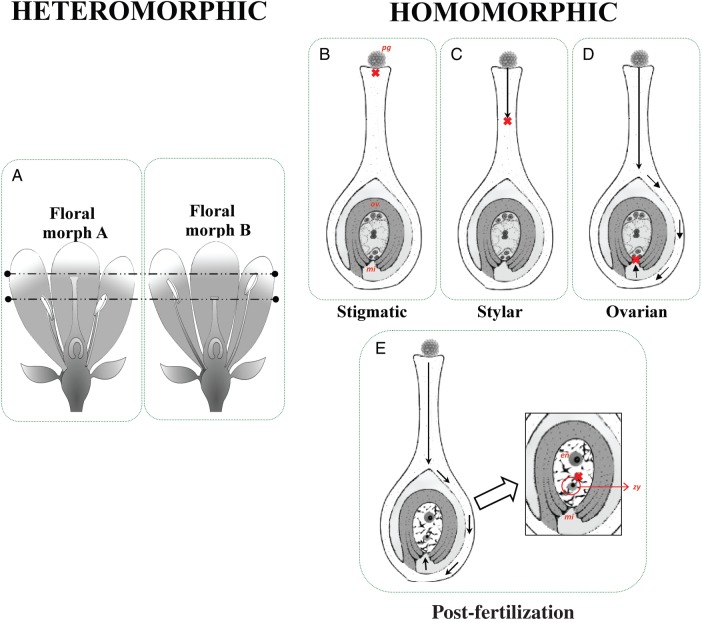Fig. 1.
Types of self-incompatibility in the angiosperms. (A) Heteromorphic: self-incompatibility (SI) may be associated with heterostyly (morphological variation in anther and stigma heights), such that populations have two (dimorphism) or three (trimorphism) floral morphs that exhibit reciprocal anther–stigma heights. Variation in anther–stigma heights is controlled by a group of linked genes that may also be linked to a locus causing genetic SI in flowers of one of the types described in the right panel. (B–E) Homomorphic: sites of expression of self-incompatibility. SI may occur at (B) the stigmatic surface such that a pollen grain (pg) does not germinate, (C) in the stylar region such that a pollen grain does not reach the ovary (ov) or micropyle (mi), (D) in the ovary – such that the pollen tube cannot penetrate the micropyle (mi) or, if it does, fertilization does not occur (ovarian inhibition) or (E) post-fertilization – if following fertilization, the zygote (zy) and/or endosperm (en) fail to develop.

